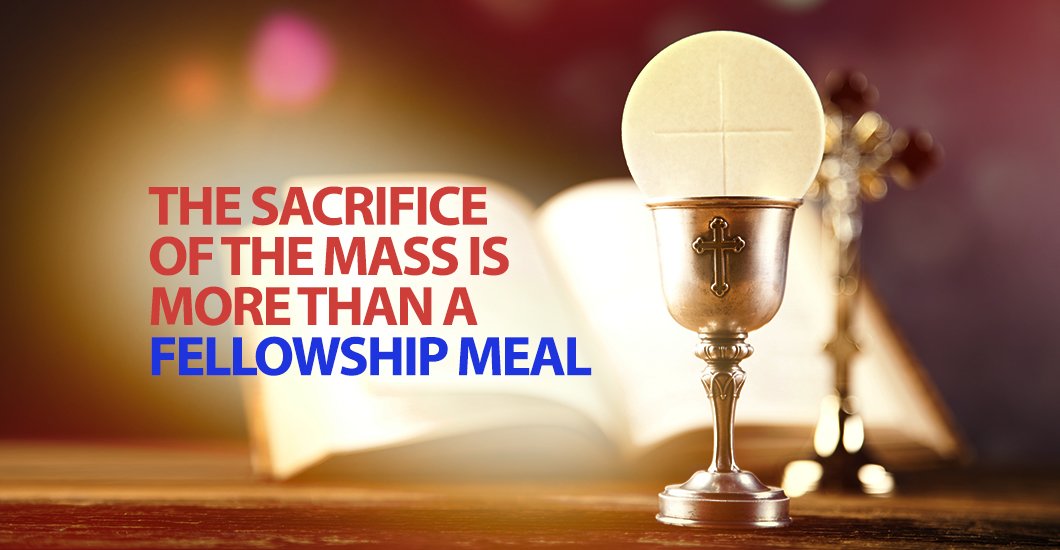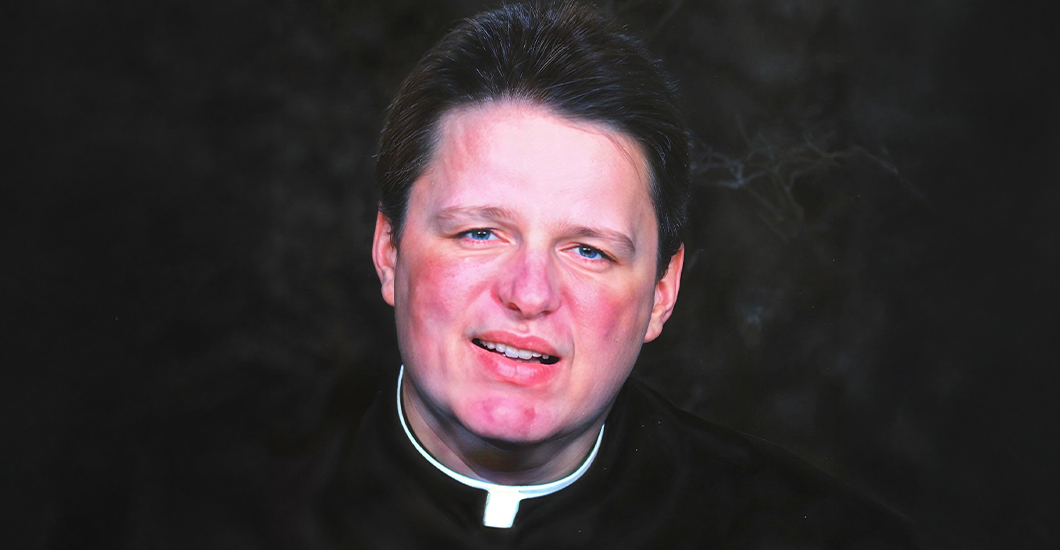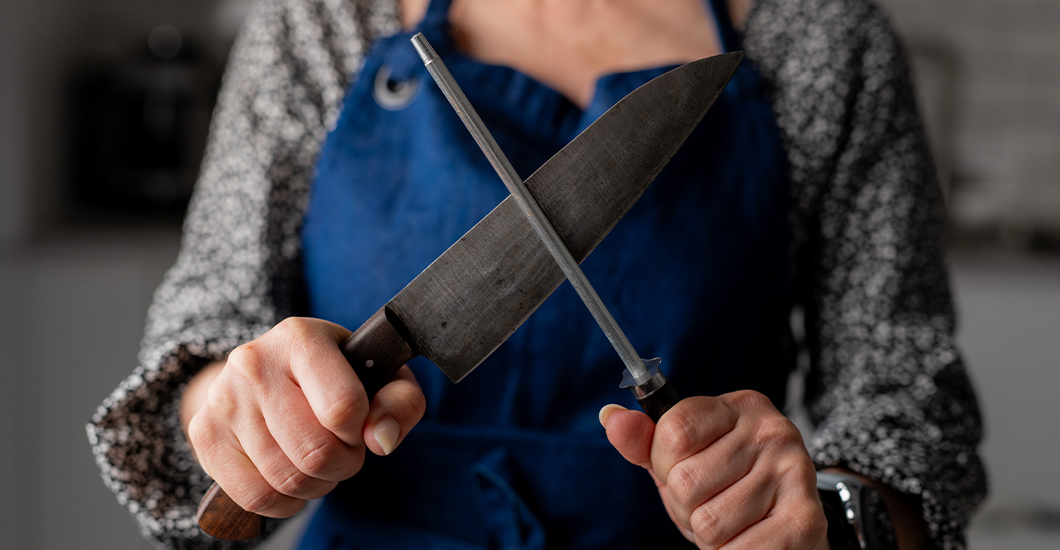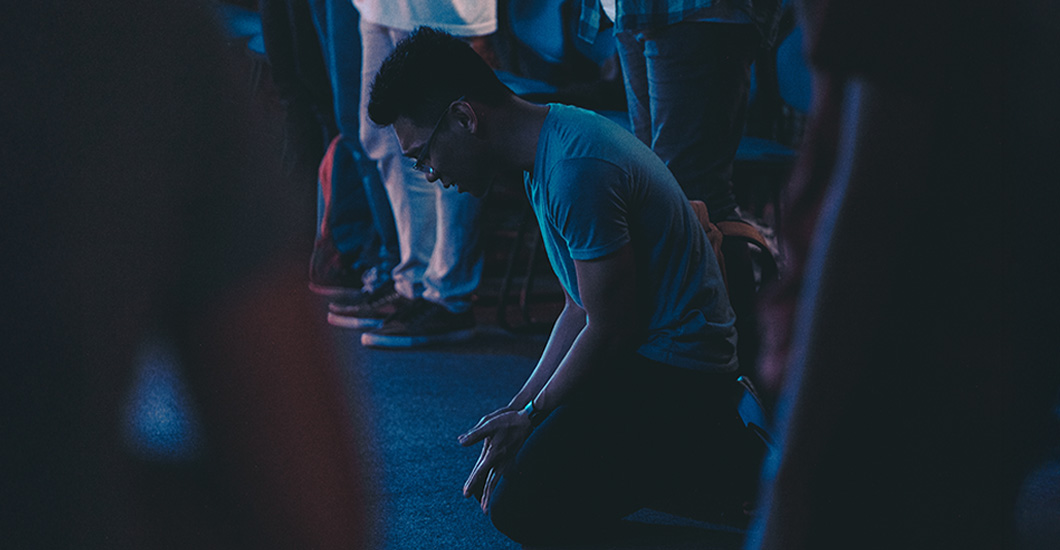Trending Articles
The Sacrifice of the Mass is More than a Fellowship Meal
If you thought Mel Gibson’s “Passion of the Christ” was too gutwrenchingly violent, his movie “Apocolypto” is not for you. Set among the Mayans in the 16th century, the film portrays their customs of human sacrifice with unsparing realism. Heads roll, blood spurts, victims scream as the cruel priests torture and kill thousands in a vain offering to their bloodthirsty gods.
Human sacrifice, often accompanied by cannibalism, was common amongst parts of virtually every primitive civilization around the world. Why did people believe that human sacrifice was necessary? The logic is pretty simple: according to primitive belief systems, the gods controlled all the factors that led to either peace and prosperity or death and destruction. To please them, the gods were offered the very best thing possible: human life. The ancients believed that the life of the flesh was in the blood, so to offer the gods life, you had to shed blood so that the invisible life force could be released.
God revealed the true way of sacrifice through the religious history of the Jewish race. When Abraham took his son Isaac up the mountain to be sacrificed, he was only doing what most primitive people expected they would have to do to please the gods. However, the God of Mercy intervened and told Abraham to offer a goat instead. In the Passover, and continuing through their sacrificial system in the temple at Jerusalem, the Jews offered God the blood of animals rather than the lives of their own children.
This was a step forward, but it was still unsatisfactory. God Himself says in the Old Testament, “Do you think I want the blood of goats and bulls?” The sacrificial system was only a pointer to the one, full, final sacrifice, in which God gives His own son in a bloody immolation for the whole world. Through the Mass that human sacrifice to end all human sacrifices is remembered and brought into the present moment and applied to the needs of each one of us here in our world today.
The idea that sacrifice should be central to Christian worship is a scandal to many modern people. Rightly horrified by human sacrifice and revolted by the ritual slaughter of animals, some Catholics wish to turn away from the idea that the Mass is a sacrifice. They wish to discard the religious concept of sacrifice because it seems primitive, superstitious and barbaric. Instead, they promote the idea that the Mass is essentially a fellowship meal. They bring forward the Biblical concept of the solemn meal that sealed a covenant between two contracting parties, and they see the Mass as a newer form of the regular ritual meals that the Jews celebrated. The fellowship covenant ritual meal, they believe, makes for a better and fuller understanding of the Mass.
Along with this de-emphasis of sacrifice, they also see the Mass more as a re-enactment of the Last Supper than a vivid remembering of the crucifixion of Christ. By focusing on the Mass as a ritual fellowship meal, they have inadvertently shifted the focus away from the cross of Christ.
This underlying theological shift of focus is the real reason why priests suddenly began celebrating Mass facing the people. From time immemorial the priest faced the altar, praying in the same direction as the people. He presented Christ’s once-for-all sacrifice with and for them to the Father. However, if the Mass is primarily a re-enactment of the Last Supper, and a kind of Jewish ritual fellowship meal, then it makes perfect sense for the priest to celebrate Mass facing the people as a father might preside at the table for family dinner.
The theological notion that the Mass was now primarily a fellowship meal rather than a sacrifice brought about a revolution not only in where the priest stood to celebrate Mass, but also in every aspect of Catholic worship. Church buildings became large round meeting houses for the family meal. There was no longer an introit hymn to start Mass, but a ‘gathering hymn.’ Liturgical music voiced emotions about unity, togetherness, the people of God and the fellowship. The focus shifted from worship of God to family togetherness.
As a result of these theological and liturgical innovations the idea of sacrifice in the Mass was largely forgotten. Does it matter? Are the critics right? Is the concept of sacrifice a primitive, barbaric and superstitious religious custom? Are we better off without it? Is it not nicer for Mass to be all about us and our needs and how we can make the world a better place?
I think not, and here is why: First of all, we should understand what the fully Christian concept of sacrifice really is. Let us be clear, we do not offer an oblation to appease an angry God or bribe Him to make it rain. The primitive pagan human sacrifices and the animal sacrifices of the Jews were only prophecies and precursors of the one, full, final sacrifice of Christ. That sacrifice is remembered and brought into the present moment through the Mass. The sacrifice we offer now is the sacrifice of praise, and the offering we now make is the offering of ourselves, our souls and our bodies as a living sacrifice (Romans 12:1-2).
The concept of sacrifice must not be lost, because through the understanding of sacrifice we not only enter into the mystery of Christ’s death, but also into the spiritual heart of God Himself. Sacrifice is a total offering of oneself, and this reveals to us what God is like. God is the One who is totally self-giving. That is His nature and His purpose. Sacrifice is, therefore, another way to enter into the mystery of who God is. God cannot help but sacrifice Himself for us. That is His nature, and His nature is Love.
When we shift our understanding of the Mass from sacrifice to fellowship meal, we lose the most profound and mysterious aspect of our Catholic worship. Only when we remember the true meaning of sacrifice will we remember the true meaning of the Mass, and only as we remember the true meaning of the Mass will we be able to renew our worship, renew our Church and renew the very heart of our spiritual existence.
Father Dwight Longenecker is a former Evangelical, then an Anglican priest, and now a Catholic priest. Visit his website at www.DwightLongenecker.com to browse his books and to be in touch. Article originally appeared at www.aleteia.org. Reprinted with permission.
Latest Articles
Want to be in the loop?
Get the latest updates from Tidings!








